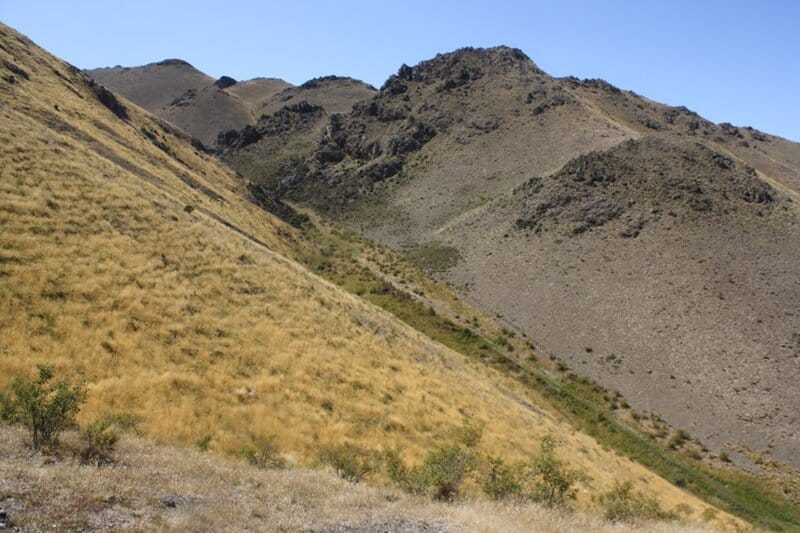Have you ever wondered why different landscapes respond differently to the same management practices, like rest, grazing, fire, etc? Or why doesn’t a particular management practice applied on your farm produce the same outcome as it might on someone else’s?
While there could be more than one reason for these differences, Allan Savory developed the concept of brittleness based on these questions. Gaining a better understanding of this concept can empower you to make more informed decisions about which management practices to implement.
The concept of brittleness
Brittleness is one of the four key insights discovered by Allan in the development of the Holistic Management approach. In essence, it refers to the distribution of humidity across the year. This may be precipitation (rainfall and snow) but can also be fog, mist, etc. Although Brittle and Non-brittle environments can have similar total humidity levels for the year, the distribution of that humidity and the extent of dry periods define where a landscape sits on the brittleness scale.
In a very non-brittle landscape (1 on the Brittleness scale), if left to rest, undisturbed by grazing or other intervention, the landscape will rapidly revegetate – think tropical rainforests. However, at the other end of the scale (10), in a very brittle environment, desertification will be the result of prolonged rest – for example, the African plains. This is because humidity is influencing microbial activity and, therefore, the rate of plant decay and growth.
For microbes to thrive in our soils they require water, air and food (just like us!). So, if they have access to water all year round, then they will be relatively active all year round (provided they also have sufficient air and food), and there will be constant decay of plant material, allowing for cycling of nutrients to support growth and succession of plant communities. These environments, therefore, have longer growing seasons and greater resilience.
In a non-brittle landscape, without water for extended periods, microbes will not be active and dead plant matter will not be broken down, so it will build up and slowly oxidise. In this environment, nutrient cycling will be halted, and plant growth will cease during these periods of drought (short growing seasons) which is becoming increasingly relevant in NZ.
An easy way to determine where your land sits on the brittleness scale is to observe the dead plant matter—is it going grey (oxidising) or brown/tan (decaying)?
As you might be realising by now, understanding Brittleness is important to farm management because it determines how plant material will break down in our environment. This, in turn, affects the outcome of applying different management practices such as rest, fire, and animal impact.
Read more about animal impact here.


How brittleness impacts landscapes
Another way to think about brittleness and how it impacts landscapes is to think about how the ecosystem responds to stress. In physics, brittleness describes a material’s tendency to easily break or snap under stress and brittle materials will absorb very little energy prior to fracturing. Similarly, when brittle ecosystems are stressed, they absorb less and less energy prior to a relatively abrupt collapse.
In contrast, non-brittle materials can be stretched and pulled without breaking and will continue to absorb energy under stress. In NZ, with our temperate climate, we mostly tend towards the non-brittle end of the scale, meaning our farming landscapes will still absorb energy and remain relatively productive when stressed (drought conditions, overgrazing, etc). But keep in mind this doesn’t mean the ecosystem is functioning well!
Working across nearly 500,000ha of NZ gives us a great opportunity to monitor the impacts of farming practices on ecological health. It is increasingly common to see longer periods of dry within some regions, compacted shallow soils with lower moisture content, and poor mineral and water cycling, creating greater reliance on expensive inputs, eroding profits, and locking farmers into a reductionist system more removed from nature.
These areas show signs of a brittle system despite New Zealand’s generally non-brittle state. Our land is degenerating under conventional extractive management practices; our future depends on creating conditions for nature to work for us.
The role of Holistic Planned Grazing
Holistic Planned Grazing and the importance of Animal Impact as a tool is often dismissed in NZ as it was developed in response to a brittle environment and so is thought to not apply to our NZ context. But even in NZ’s generally non-brittle environment, the integration and management of animals on the land is the best tool we have to restore land health.
As identified earlier, large regions of NZ are showing more characteristics of brittle environments: longer periods of dry with oxidation of dead plant material. This is in response to management practices. We can only reverse this through grazing management. Synthetic inputs will not fix this.
Some farms combine zones of different brittleness. Landscapes in Central Otago and the Canterbury Plains can tend to be more brittle. In fact, a single station encompassing Hill Country and Flats can have both brittle and non-brittle environments. The implication of this is that different management may be required depending on where the environment sits on the brittleness scale.
Secondly, animal impact is a useful tool for speeding the decay of plant matter and the cycling of nutrients in both brittle and non-brittle environments.
Moving from heavy reliance on synthetic inputs depends on effective grazing management; the only solution is to plan to have animals in the right place at the right time for the right reason with the right behaviour.
Understanding the concept of brittleness can guide your decision-making
Understanding the concept of brittleness can really help with our decision-making about what management practices to use on our land, when to use them, and why.
Holistic Planned Grazing is flexible enough to deal with constantly changing conditions, making continuous incremental progress along the way, which can, in turn, bring us back in sync with nature. If you’re looking for tangible results in the shortest time, this is the answer.
This is a very broad overview of the concept. To learn more about brittleness and how it affects management and ecosystem function, please contact us through our website. Ata Regenerative provides advice and coaching in Holistic Management and the application of regenerative principles to agriculture.
There are also resources available through our website and Savory Global.



